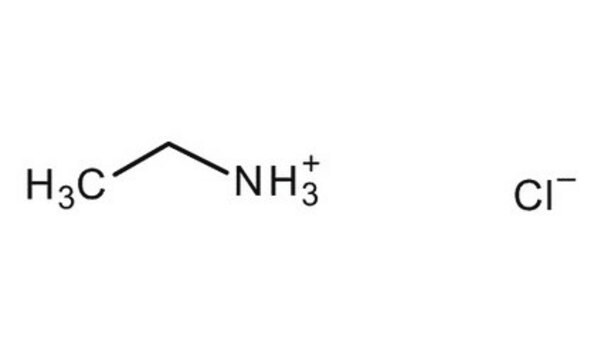All Photos(2)
About This Item
Linear Formula:
(C2H5)2NH · HBr
CAS Number:
Molecular Weight:
154.05
EC Number:
MDL number:
UNSPSC Code:
12352100
PubChem Substance ID:
NACRES:
NA.22
Recommended Products
Quality Level
assay
98%
mp
218-220 °C (lit.)
functional group
amine
SMILES string
Br[H].CCNCC
InChI
1S/C4H11N.BrH/c1-3-5-4-2;/h5H,3-4H2,1-2H3;1H
InChI key
AATGHKSFEUVOPF-UHFFFAOYSA-N
Looking for similar products? Visit Product Comparison Guide
Related Categories
Application
Diethylamine hydrobromide was used in the synthesis of α-bromovinyltrimethylsilane.
signalword
Warning
hcodes
Hazard Classifications
Eye Irrit. 2 - Skin Irrit. 2
Storage Class
11 - Combustible Solids
wgk_germany
WGK 3
flash_point_f
Not applicable
flash_point_c
Not applicable
ppe
dust mask type N95 (US), Eyeshields, Gloves
Choose from one of the most recent versions:
Already Own This Product?
Find documentation for the products that you have recently purchased in the Document Library.
SYNTHESES AND POLYMERIZATION OF α-TRIMETHYLSILYL ACRYLIC MONOMERS.
Canadian Journal of Chemistry, 41(12), 2977-2982 (1963)
Nathalie Hasler-Nguyen et al.
BMC research notes, 5, 321-321 (2012-06-23)
Rubbing a topical NSAID (non steroidal anti-inflammatory drug) on the skin may increase local drug permeation, affecting its distribution to the site of pain and inflammation. The present study evaluates this hypothesis, by assessing in vitro the effect on skin
Chunhe Yao et al.
Journal of separation science, 33(4-5), 475-483 (2010-01-12)
A novel kind of poly(glycidyl methacrylate-co-ethylene glycol dimethacrylate)-based monolithic column was developed for LC by directing supramolecular self-assembly of high internal phase emulsion. Mercury intrusion porosimetry characterization and scanning electron microscope pictures showed that these monoliths presented micrometer-sized throughpores, unique
Clarence M Ongkudon et al.
Journal of chromatography. B, Analytical technologies in the biomedical and life sciences, 878(28), 2719-2725 (2010-09-03)
Anion exchange monolithic chromatography is increasingly becoming a prominent tool for plasmid DNA purification but no generic protocol is available to purify all types of plasmid DNA. In this work, we established a simple framework and used it to specifically
Muhammad J A Shiddiky et al.
Journal of the American Chemical Society, 132(29), 10053-10063 (2010-07-06)
A highly selective and sensitive electrochemical biosensor has been developed that detects DNA hybridization by employing the electrocatalytic activity of ferrocene (Fc) bearing cyclen complexes (cyclen = 1,4,7,10-tetraazacyclododecane, Fc[Zn(cyclen)H(2)O](2)(ClO(4))(4) (R1), Fc(cyclen)(2) (R2), Fc[Zn(cyclen)H(2)O](ClO(4))(2) (R3), and Fc(cyclen) (R4)). A sandwich-type approach
Our team of scientists has experience in all areas of research including Life Science, Material Science, Chemical Synthesis, Chromatography, Analytical and many others.
Contact Technical Service








